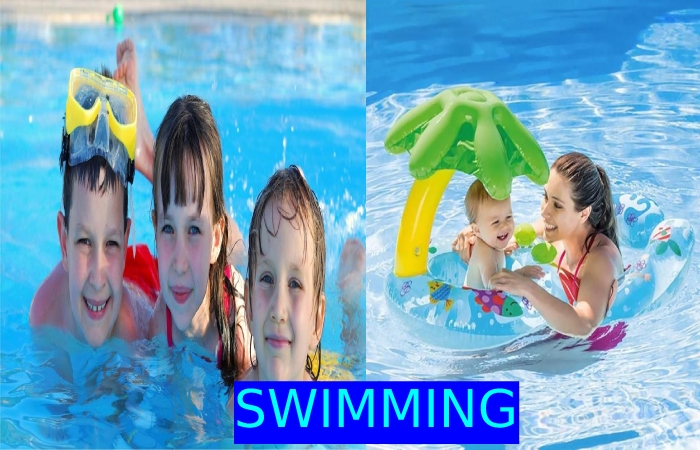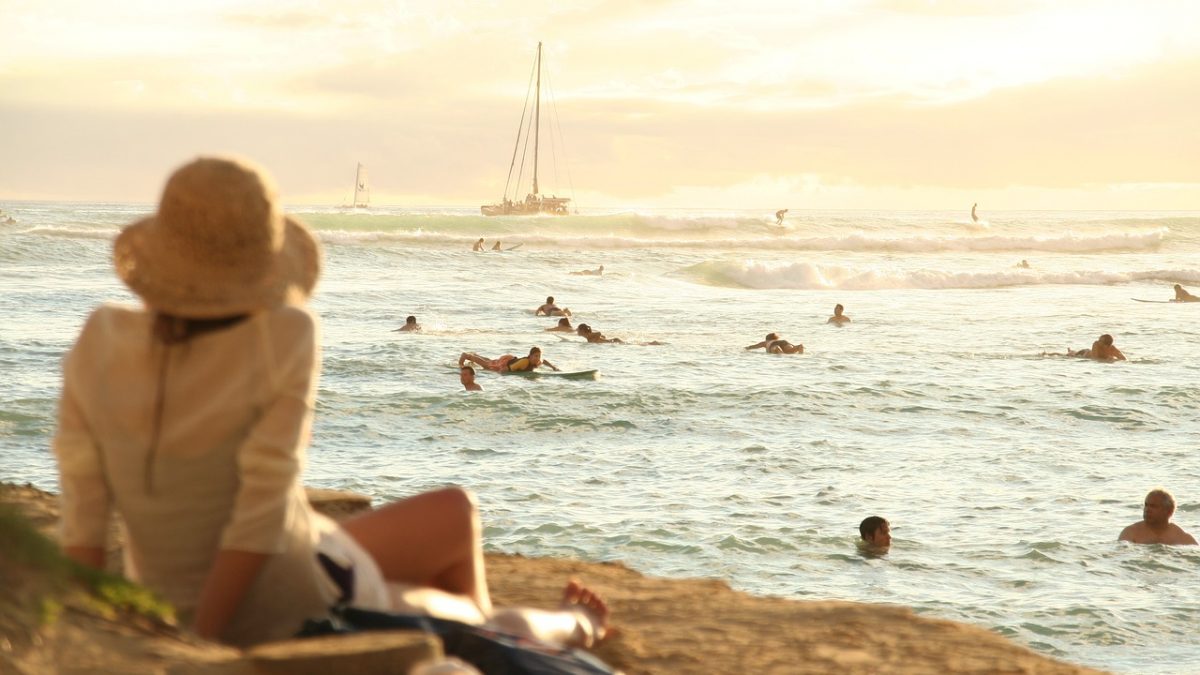Table of Contents
Swimming – Explaining — Sport and Recreation
Swimming is an excellent form of fitness for people of all ages. It can be easy and inexpensive if you already know how to swim. You can go at your own pace.
Swimming in recreation and sports, the thrust of the body through water by combined arm and leg motions and the natural flotation of the body. Swimming as an exercise is famous as an all-around body developer and is particularly useful in therapy and as an exercise for physically disabled persons. It is also taught for lifesaving purposes—swimming, sea diving, lifesaving, surfing, synchronized swimming, underwater diving, and water polo.
History of swimming
Archaeological and other evidence show that swimming was practised as early as 2500 BCE in Egypt and the Assyrian, Greek, and Roman civilizations. In Greece and Rome, swimming remained a part of martial Training and was, with the alphabet, also part of primary teaching for males.
There is more evidence of swimming races than in Japan. In the Orient, swimming dates back at the smallest to the 1st century BCE. By the 17th century, an imposing edict had made the teaching of swimming required in schools. Prepared swimming events were held in the 19th century before the Western world.
Among the preliterate oceanic peoples of the Pacific, children learned swimming about the time they walked, or even before. There is a note of occasional races among the ancient Greeks, and a famous boxer swam as part of his Training. The Romans built swimming pools, separate from their baths. In the 1st period BCE, the Roman Gaius Maecenas built the first heated swimming pool.
Inexpensive swimming
Transnationally, competitive swimming came into prominence with its inclusion in the modern Olympian Games in 1896. Olympic events were initially only for men, but women’s events in 1912.
Before the formation of FINA, the Sports included approximately uncommon proceedings. In 1900, designed for instance, when the Games’ swimming procedures on the Seine River in France, a 200-metre obstacle race involved climbing over a pole and a stroke of boats and swimming under them. Such oddities disappeared after FINA took charge.
Under FINA rules, for both Olympic and other world competitions, race lengths increasingly became measured in metres, and in 1969 world records for yard-measured races were abolished.
O freestyle (crawl), backstroke, breaststroke, and butterfly. All four strokes in individual medley races. Many nations have dominated Olympic and world competitions at one time or another, including Hungary, Denmark, Australia, Germany, France, Great Britain, Canada, Japan, and the United States.
Instruction and Training in swimming
In Great Britain in the 19th period, the earliest instruction programs were for sport and lifesaving. Those agendas were unoriginal in the rest of Europe. In the United States, under the auspices of the American Red Cross in 1916. Instructional work done by the various armed services branches during World Wars I and II effectively promoted swimming. Courses taught by community administrations and schools, extending ultimately to very young infants, became common.
Train Yourself with swimming
The early practice of simply swimming as much as possible at every workout was replaced by interval training and replication exercises by the late 1950s. Interval training contains a series of swims of the same reserve with skilful rest periods.
 Notice How the Swimmer Continues a Steady Flutter kick During the Freestyle Stroke in swimming
Notice How the Swimmer Continues a Steady Flutter kick During the Freestyle Stroke in swimming
Freestyle, The swimmer maintains a solid and steady flutter kick. The stroke begins with the swimmer’s arm spreading forward at about shoulder width, then back across the body to the hip. During recovery, the component back near the head, keeping the elbow raised above the body—strokes alternative among arms. The swimmer respires underwater and takes a breath when needed.
In slow interval training, used chiefly to develop endurance, the rest is always shorter than the time to swim the prescribed distance. Quick interval training, used mainly to build speed, permits rest periods long enough to recover the heart and breathing rate fully.
Strokes in swimming
The earliest strokes to be rummage-sale were the sidestroke and the breaststroke. The sidestroke was initially used with both arms submerged. That practice modifies toward the end of the 19th century by bringing forward the first arm above the water, then the other, and each in turn. The sidestroke was supplanted in inexpensive swimming by the skulk but still rummage-sale in lifesaving and recreational swimming.
The body vacations on its side, and the arms propel consecutively. The leg gesticulation used in sidestroke the scissors kick, in which the legs open slowly, under leg backwards, upper portion forward, both laps slightly bent, and toes pointed. The scissoring action of the legs pending smartly together after opening creates the forward propulsion of the kick.
Breaststroke is the oldest of strokes in lifesaving and recreational swimming and competitive swimming. As premature as the end of the 17th century, the stroke consisted of a wide pull of the arms mutual with asymmetrical action of the legs and simulating the movement of a swimming frog, hence the usual term frog kick. The stroke is particularly effective in rough water.
The Windmill Motion of the Swimmer’s Missiles and when to Breathe Through the Butterfly Stroke
Butterfly The stroke begins with the swimmer’s arms moving in a windmill style from back to front. The hands then move down the chest to the hips. The legs are kept together and pushed down like a flipper in a double rhythm corresponding to the exit and entry of the hands from the water. Breath inhaled while the hands are underwater.
The stroke lies face down in the water, the arms always remaining underwater. The early breaststroke featured a short glide after the frog kick. Later the competitive breaststroke eliminated the glide. In the old breaststroke, in at the beginning of the arm stroke, but in the later style, breath in near the end of the arm pull.
Some of the Benefits
Total Body Workout
Swimming is a great total body workout! When you swim, you engage almost every primary muscle collection requiring you to usage your arms, legs, core and focus on balancing. Regularly will improve your strength, tone muscle, enhance fitness, and increase metabolism.
Water is 800x denser than air.
Increases your heart rate deprived of putting pressure on your body.
Cardiovascular Fitness
Swimming is the best form of low influence cardiovascular capability!
Cardiovascular exercise includes the heart, lungs, and circulatory system. This is an excellent way to stay in shape and improve your well-being for a lifetime! Any aerobic activity like biking, running will advance your cardiovascular fitness.
Lifelong Fitness
Swimming is an exclusive game because it is suitable for all ages and fitness levels. Some types of exercise can be stimulating or unbearable to complete for people of dissimilar eternities than skill levels.
Let’s you go at your step and invite newcomers. It is the only sport you can do from the cradle to the grave.
Conclusion
Swimming is a low-impact activity, so it’s an excellent way to exercise if you have an injury or a condition like arthritis. The water gently provisions muscles, so it’s like being in zero gravity with the added benefit of the water’s resistance for fitness.
Regularly will assistance you shape muscles and improving your endurance, which will help you prevent injury, too!
Swimming can also be a brilliant exercise for those with mental disabilities, as it helps boost confidence and emphasizes focus on body positioning.
Also Read: Horseradish – Meaning, Taste, Buy, Prepared, And More

